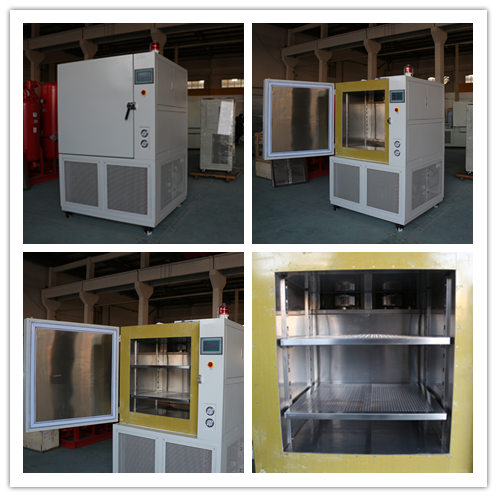Causas da redução do efeito de transferência de calor dos frigoríficos verticais de temperatura ultra baixa
If the outer frost layer of the vertical ultra-low temperature refrigerator is too thick or excessively dusty, it may cause the external temperature of the equipment to be mostly lower than 0, resulting in low heat transfer efficiency of the evaporator. Because the vertical ultra-low temperature refrigerator has relatively high humidity, the moisture in the air is easy to frost on the surface of the evaporator, and even freezes, which affects the heat transfer effect of the evaporator. In order to prevent the outer frost layer of the evaporator from being too thick, it needs to be timely Defrost.
Vertical ultra-low temperature refrigerators have two convenient defrosting methods: stop defrost, that is, stop the compressor operation, open the vertical ultra-low temperature refrigerator door, let the temperature rise, and then restart the compressor after the frost layer is automatically melted. Another is the cream. After the contents of the refrigerator are carried out, the surface of the evaporator tube is directly washed with tap water having a relatively high temperature to dissolve or fall off the frost layer. In addition to the excessive frosting, the heat transfer effect of the evaporator is not good. The appearance of the evaporator is too thick due to temporary uncleaning, and the heat transfer efficiency is also significantly reduced.
Vertical ultra-low temperature refrigerators have poor heat insulation and heat preservation effects, which can also lead to poor heat transfer effect, poor heat insulation and heat preservation effect, and poor heat insulation performance because the thickness of the insulation layer of the pipeline is insufficient. Mainly due to the improper selection of the thickness of the insulation layer when designing the vertical ultra-low temperature refrigerator or the poor quality of the insulation data during construction. In the process of construction, the insulation moisture-proof function of the insulation data may be destroyed, resulting in moisture, deformation and even erosion of the insulation layer. The heat insulation capacity is reduced, the loss of the refrigerator’s cooling capacity is increased, and the temperature drop is significantly slowed down.

Another important reason for the large loss of cold is that the vertical ultra-low temperature refrigerator has poor sealing performance, and more hot air invades the equipment from the leak. Generally, if condensation forms on the seal of the vertical ultra-low temperature refrigerator door or the seal of the cold storage wall, it means that the seal is not tight. In addition, frequent switching of the vertical ultra-low temperature refrigerator door or more people into the equipment together will also increase the cooling capacity of the warehouse. The refrigerator door should be prevented from opening as much as possible to prevent large amounts of hot air from entering.
Analysis of these situations, I hope to help the work of my peers, and develop detailed working conditions and maintenance instructions for the vertical ultra-low temperature refrigerator.
Recomendações relacionadas
-
Partilha de conhecimentos sobre a seleção e manutenção de refrigeradores
1728Os chillers podem ser usados em muitas indústrias, mas quem é o melhor fabricante de chillers de baixa temperatura nos principais fabricantes de chillers? A escolha do próprio modelo e a manutenção também são muito importantes. A seguir, veja comigo. 1. Gama de...
Ver detalhes -
Relação entre a temperatura de condensação e a temperatura de condensação em temperaturas ultrabaixas
1975A temperatura de arrefecimento dos chillers de recirculação de temperatura ultra baixa refere-se à temperatura à qual o estado da substância muda de um estado gasoso para um estado líquido sob uma determinada pressão. Diferentes substâncias têm diferentes...
Ver detalhes -
Método de manutenção diária da máquina de ciclo de aquecimento e arrefecimento de óleo de transferência de calor
1813A máquina de ciclo de arrefecimento e aquecimento de óleo condutor de calor é um conjunto de apoio de vários reactores na indústria farmacêutica e química. O reator pode ser utilizado para arrefecimento ou aquecimento, e tem um elevado rácio de eficiência energética. Não necessita de ...
Ver detalhes -
Dicas para a deteção de fugas no congelador de baixa temperatura
1510Deteção de fugas por imersãoA sensibilidade da deteção de fugas por imersão é superior à do teste de bolhas, que é normalmente aplicado a pequenas unidades de congelação Freon. Ao utilizá-lo, o equipamento proibido de entrar em contacto com a água no sistema deve ser descarregado...
Ver detalhes
 LNEYA Refrigeradores industriais Fabricante Fornecedor
LNEYA Refrigeradores industriais Fabricante Fornecedor











